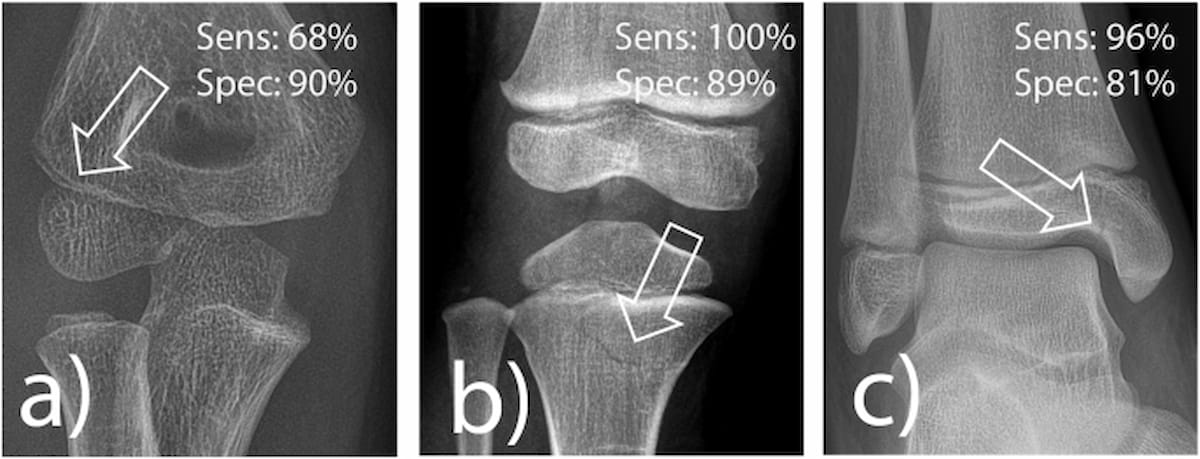An emerging artificial intelligence (AI) software may provide pediatric emergency departments with a standalone option for X-ray fracture detection, according to new research.
For the retrospective study, recently published in European Radiology, researchers assessed the standalone effectiveness of the AI software RBFracture (Radiobotics) for detecting fractures in 1,672 pediatric patients (a 59 percent male cohort with a median age of 10.9).
Overall, the study authors found the AI software provided a 92 percent sensitivity, an 83 percent specificity and an 87 percent accuracy for standalone detection of pediatric fractures on X-ray.
When the AI software was used adjunctively by residents, researchers noted three percent, one percent and two percent increases in sensitivity, specificity, and accuracy respectively.
“The AI exhibited strong stand-alone performance in a pediatric setting and can modestly enhance the diagnostic accuracy of inexperienced physicians,” wrote lead study author Maria Ziegner, M.D., who is affiliated with the Department of Pediatric Surgery at University Hospital in Leipzig, Germany, and colleagues.
The study authors also assessed the AI software for the detection of proximal tibia fractures, medial malleolus fractures and radial condyle fractures, all of which are commonly missed in practice and have significant medicolegal considerations, according to the study authors.
For proximal tibia fractures, the AI software provided 100 percent sensitivity and 89 percent specificity. The study findings also revealed that medial malleolar fractures on X-ray were detect by the AI software with 96 percent sensitivity and an 81 percent specificity.
Three Key Takeaways
1. High standalone performance. The AI software (RBFracture) demonstrated strong standalone accuracy (87 percent) in detecting pediatric fractures on X-ray, with 92 percent sensitivity and 83 percent specificity.
2. Useful adjunct for inexperienced physicians. When used alongside resident interpretation, the AI modestly improved diagnostic performance by 3 percent in sensitivity, 1 percent in specificity, and 2 percent in accuracy.
3. Strong for certain pediatric fractures but needs Improvement for others. The AI excelled in identifying proximal tibia (100 percent sensitivity) and medial malleolus fractures (96 percent sensitivity), but had lower sensitivity (68 percent) for radial condyle fractures, suggesting a need for further training in subtle pediatric elbow injuries.
While the AI software did offer a 90 percent specificity for radial condyle fractures, the study authors acknowledged a lower sensitivity of 68 percent.
“Consequently, more intensive AI training focused on pediatric elbow fractures, particularly this type of subtle fracture, would be highly beneficial,” added Ziegner and colleagues.
(For related content, see “FDA Grants AI Platform Expanded Clearance for Pediatric Fracture Detection on X-Rays,” “AI Facilitates Nearly 83 Percent Improvement in Turnaround Time for Fracture X-Rays” and “Gleamer’s BoneView Gains FDA Clearance for AI-Powered Pediatric Fracture Detection.”)
Beyond the inherent limitations of a single-center retrospective study, the authors acknowledged the use of expert consensus as the ground truth and noted that updates to the AI software occurred between the initiation of the study and its publication.
